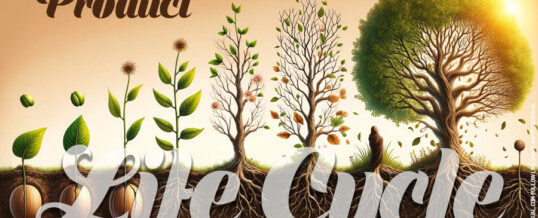
Welcome to the intricate dance of innovation and commerce, where the product life cycle reigns as the choreographer of market success. This journey from ideation to retirement follows a rhythmic pattern, etched by economist Theodore Levitt into five distinct stages—development, introduction, growth, maturity, and decline. This narrative is not merely about a product’s lifespan; it’s about understanding and harnessing the transformative power of market research to inform and guide each step. As we delve into each stage, we unravel how strategic insights fuel decisions, shape market presence, and ultimately, determine a product’s legacy in the commercial realm.
Stage 1: Development – Laying the Groundwork
A product life cycle begins long before it reaches the consumer’s hands; it starts in the crucible of development. This embryonic stage is a blend of creativity, foresight, and strategic planning, where the seeds of innovation are nurtured. It’s in this phase that market research is most impactful. Research at this stage is multifaceted—it informs the ideation process, shapes the product’s design to fit unmet needs, anticipates market trends, and sets the stage for future marketing strategies.
 Market research methodologies, such as SWOT analysis, consumer trend analysis, and competitive intelligence, are employed to create a solid foundation upon which a product can be built. These methods yield insights into consumer behavior, potential market size, and the competitive landscape, guiding decisions around product features, pricing strategies, and potential market entry barriers.
Market research methodologies, such as SWOT analysis, consumer trend analysis, and competitive intelligence, are employed to create a solid foundation upon which a product can be built. These methods yield insights into consumer behavior, potential market size, and the competitive landscape, guiding decisions around product features, pricing strategies, and potential market entry barriers.
In this development stage, every aspect of the product is hypothetical, and the investment is speculative. Yet, it’s the rigor and depth of market research that can reduce this uncertainty. By thoroughly understanding the target audience, their pain points, and desires, companies can tailor their products to align with market expectations, thereby enhancing the probability of market acceptance and success.
Engaging with potential users through focus groups and surveys, analyzing market data for trends and patterns, and continuously iterating the product based on feedback are all critical components of market research at this stage. This is not a one-off task but a continuous process that evolves as the product moves closer to realization, ensuring that when the product does launch, it is not just a representation of the company’s vision but also a reflection of the market’s needs and expectations.
Stage 2: Introduction – Making the First Impression
The product introduction stage is where anticipation meets reality. After the meticulous groundwork of development, the product greets the market with anticipation. Here, market research takes on a different hue; it’s about precision targeting, impactful messaging, and strategic positioning. During the introduction phase, market research provides the intelligence needed to navigate the product’s first steps in the real world.
Detailed demographic studies, consumer behavior analysis, and segmentation are leveraged to identify the early adopters. Marketing efforts are informed by insights into where these consumers gather information and make their purchasing decisions. This phase often sees tailored marketing campaigns, focusing on creating a brand identity that resonates with the target audience, and establishing a value proposition that differentiates the product in the market.
In the face of substantial marketing expenditure, the role of market research is to ensure the effectiveness of every dollar spent. It guides pricing strategies to balance competitiveness with profitability, informs promotional activities to generate buzz, and assesses distribution channels for accessibility and efficiency. The goal is to build a solid customer base and set the stage for sustained growth. Market research during this phase is about making informed bets on how to introduce the product to the market in a way that paves the way for long-term success.
Stage 3: Growth – Capturing Market Share
With the groundwork set and the first impressions made, the growth stage represents a product’s ascent to market prominence. It’s a period characterized by rapidly increasing sales, market share expansion, and the strategic scaling of operations. Market research in this stage is pivotal in steering the product’s trajectory towards optimal growth.
This phase’s research delves into performance analytics, market feedback, and competitor benchmarks. It’s about understanding which features are resonating with customers and identifying potential areas for product enhancement. Consumer feedback mechanisms, such as surveys and product reviews, become crucial for gathering actionable insights that drive product refinement and innovation.
Market research also plays a role in brand positioning and marketing message fine-tuning. As the market’s awareness of the product increases, understanding the factors that drive consumer loyalty and satisfaction is essential for sustaining growth. Competitor analysis becomes increasingly important, as the market’s reaction to your product’s success can prompt new entries or changes in competitor strategies.
The growth stage is also a time to explore new market segments or expansion into additional territories. Market research provides data on market size, consumer behavior, and regulatory considerations, informing whether to deepen market penetration or diversify into new arenas.
Stage 4: Maturity – Sustaining the Peak
Attaining maturity is a testament to a product’s market resonance, yet it’s also a signal to strategize against the inevitable plateau. Market research during the maturity phase of the product life cycle is about sustaining success and exploring avenues for rejuvenation. It’s crucial to understand the subtle shifts in consumer preferences and market trends that could signal opportunities or threats.
In this stage, competitive analysis intensifies. Brands must not only monitor their rivals but also anticipate their moves. Pricing strategies may need adjustment, and promotional offers could play a significant role in maintaining customer interest. Market segmentation and differentiation become more refined, as the focus shifts to retaining market share in the face of fierce competition.
Research also extends to potential product extensions or enhancements that could breathe new life into the brand, ensuring it remains a staple in consumers’ minds and hearts. Understanding customer lifetime value and developing retention strategies becomes paramount to prolonging the product’s profitability during this stage.
Stage 5: Decline – Planning the Next Move
The decline stage is often seen as a product’s twilight, yet it’s also an opportunity for strategic decision-making informed by thorough market research. As sales dwindle and market interest wanes, research focuses on identifying the causes—is it market saturation, shifts in consumer preferences, or technological advancements?
This stage of the product life cycle requires a delicate balance between managing costs and exploring options for product revitalization. Price elasticity studies can inform pricing adjustments, while consumer surveys may reveal opportunities for product reinvention. Research into alternative markets or customer segments could uncover untapped potential, offering a new lease of life for the product.
Market research in the decline phase is about extracting maximum value while preparing for future innovation cycles. It involves tough decisions—whether to discontinue, divest, or redevelop. Each option requires comprehensive market insights to navigate the product’s end-of-life phase strategically and with financial prudence.
The Dancing Product Life Cycle
In the intricate dance of product development and market success, the product life cycle stages act as the rhythm to which businesses must sync their strategies. Market research is the choreographer, ensuring each step is taken with informed grace and purpose. From the hopeful beginnings in the development phase to the reflective sunset in the decline, it’s the insights garnered from diligent research that dictate the tempo. The narrative of any product’s life is a tale of adaptation, understanding, and strategic foresight, with market research as the guiding narrative throughout each chapter. Embracing this cycle with an informed perspective can transform a mere idea into a market triumph and turn potential declines into opportunities for renewal and growth.
About Reico
Reico is the owner and team member of The Applied VIsual, website design and development company. He is also available on Twitter @AppliedVisual
NOV
2023







